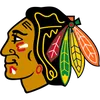
3rd Period
 Penguins
Penguins Blackhawks
Blackhawks3rd Period
 Penguins
Penguins Blackhawks
Blackhawks
3rd Period
3rd Period
 Penguins
Penguins Blackhawks
Blackhawks
3rd Period
3rd Period
 Penguins
Penguins Blackhawks
Blackhawks
3rd Period
3rd Period
 Penguins
Penguins Blackhawks
Blackhawks
3rd Period
3rd Period
 Penguins
Penguins Blackhawks
Blackhawks
3rd Period
3rd Period
 Penguins
Penguins Blackhawks
BlackhawksFull Schedule
4/6
LIVE
CHSN
4/8
8:00 pm
CHSN+
4/8
10:30 pm
CHSN+
4/8
11:00 pm
CHSN
4/9
10:00 pm
CHSN
4/10
12:00 am
4/10
5:00 pm
CHSN
4/10
11:00 pm
ESPN+
4/11
11:30 pm
CHSN
4/12
12:00 am
4/12
8:00 pm
CHSN
4/12
11:00 pm
ESPN+
4/13
5:00 pm
4/13
6:00 pm
CHSN
4/14
11:00 pm
ESPN+,Amazon Pr..
4/15
11:00 pm
CHSN ESPN+
4/15
11:30 pm
CHSN
4/16
11:30 pm
CHSN
4/17
6:00 pm
CHSN
4/18
11:00 pm
CHSN
4/19
8:00 pm
CHSN
4/20
5:30 pm
CHSN
4/21
3:00 pm
CHSN
4/22
11:30 pm
CHSN
4/23
11:30 pm
CHSN
4/24
5:00 pm
CHSN
4/26
2:00 am
CHSN
4/26
8:00 pm
CHSN
4/27
8:00 pm
CHSN
4/29
11:30 pm
CHSN
4/30
11:30 pm
CHSN
5/1
6:00 pm
CHSN
5/2
11:30 pm
CHSN
5/3
6:00 pm
CHSN
5/4
6:00 pm
CHSN
5/5
11:30 pm
CHSN
5/6
11:30 pm
CHSN
5/7
11:30 pm
CHSN
5/8
6:00 pm
CHSN
5/9
11:30 pm
CHSN
5/10
11:00 pm
CHSN
5/11
6:00 pm
CHSN
5/13
10:30 pm
CHSN
5/14
11:00 pm
CHSN
5/15
4:30 pm
CHSN
5/16
6:00 pm
CHSN
5/17
6:00 pm
CHSN
5/18
6:00 pm
CHSN









